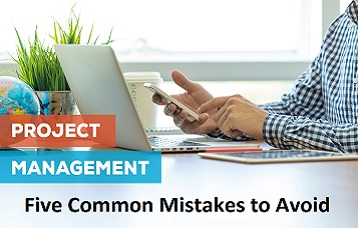 It’s a time suck. It takes at least ten minutes. It’s part of the perfunctory process. It begins whether you’re two minutes early or five minutes late. It’s long, awkward, and laborious. It’s your one minute of fame. Or not. Round Table Introductions. It’s the preamble to every client meeting and it follows some pre-determined format: name, title, what you do, and something unique about yourself or an embarrassing moment. Whether or not you’re a fan of Round Table Introductions, they somehow make their way to the top of every meeting agenda and are joined by a melting pot of personalities: self-promoters, procrastinators, lollygaggers, and time-keepers.
It’s a time suck. It takes at least ten minutes. It’s part of the perfunctory process. It begins whether you’re two minutes early or five minutes late. It’s long, awkward, and laborious. It’s your one minute of fame. Or not. Round Table Introductions. It’s the preamble to every client meeting and it follows some pre-determined format: name, title, what you do, and something unique about yourself or an embarrassing moment. Whether or not you’re a fan of Round Table Introductions, they somehow make their way to the top of every meeting agenda and are joined by a melting pot of personalities: self-promoters, procrastinators, lollygaggers, and time-keepers.
Self-Promoters: These folks aren’t just meeting participants. They’re vocalists and they’re present at every meeting. If you give them two minutes to speak, and they’ll take ten. When they start speaking it’s airtight and there’s not much room for you or anyone to interject. They like to talk and talk they will. It doesn’t matter what the topic is as long as they add their two cents to the beginning, middle or end of each statement. In fact you don’t even need to peel your eyes away from your mobile device or make direct eye contact with them; if they don’t command your direct attention, they’ll see to it that they reach you subconsciously.
Sample Self-Promoter Introduction: Hello everyone, I’m Steve, Steve Richardson and I head up the Product Team at Jenson Consulting. Our team is charged with managing the entire product line life cycle from strategic planning to delivery of MRDs and PRDs to the channels. We develop and implement company-wide go-to-market plan working across all LOBs, and run a bunch of beta and pilot programs with companies such as Brenton Engineering, Barton Advertising, and even Bolt Communications. We partner with Charlie Evans, District Sales Lead for the Midwest Regions; Susan Dunley, Northern Californian Region – oh you know Susan. She’s great isn’t she?! My son plays soccer with hers. Oh, did you see go to the game last week? Johnny scored a goal and they’re 3 and 0. It was a close one. You should have seen it. Man, it was a close one. But as I was saying, Susan Dunley from the Northern Californian Region and Jacob Stanley from the Southern Californian Region. We’ve got offices across the nation and we’re growing exponentially. It’s a good time for you to be partnering with us and my team of product managers will work with you to create a roadmap, outlining all the requirements, and define the product vision to deliver award-winning product offerings for your firm.
Before you know it, not only are your two minutes up, but your total of ten for round table introductions, plus some. Self-Promoters will have their cake and eat it too. And if you’re not careful, they’ll eat yours as well!
Procrastinators: You’re at the tenth hour and you’re a couple minutes away from presenting to the client, and these folks are still putting those last minute touches on the campaign. Call them passionate, perfectionists, or call them, procrastinators. These folks don’t mind the round table introductions so long as other people are doing the talking. They’ll take that extra minute or two to put those finishing thoughts on their representations, up until the very moment they present.
Sample Procrastinator Introduction: Oh, my turn? Hello there, I’m Steven, an Art Director. Umm… yeah.
With their brevity and urgency to get back to the topic at hand, it looks like their two minute introduction can be redistributed to the self-promoters in the room.
Lollygagger: These team members are invited to the meeting by association and are typically “optional” meeting participants, meaning their presence doesn’t influence the content and discussion points that guide the meeting. Typically, they’ve contributed to the campaign as a tertiary stakeholder and would like to be in-the-loop or take refuge from their current workload. These bodies warm up the room should you not have enough attendees to even out the ratio between internal team members and clients. Lollygaggers take pride in being present at meetings because they feel included and they have no reservations about introducing themselves as a lead contributor.
Sample Lollygagger Introduction: Hello, my name is Matthew Perkins and I am the Senior Administrative Engineering Consultant for the Mercer Campaign. I’ve been with the company for 3 ½ years and am the subject matter expert for all things pertaining to the Development side. I’m the lead for 3 lines of businesses and the head trainer for engineering and implementation of the cross-reference guide.
Contributor to the meeting or not, this lollygagger sure sounds important!
Time-Keepers: These participants are usually the “micros” of the office. They’ll manage their own schedule, yours, as well as your dog’s schedule. They’ve got these socially awkward OCD tendencies that they don’t mind exercising. Whether they’re managing the flow of the meeting, finishing off your sentence, or cutting you off directly, they’re gratified the moment they could check another item off their “to do” list. They’ll give you that “stink eye” to let you know you’re well over your time. They’ll not only turn their head, but they’ll physically turn their entire body to let you know it’s your turn and you have the floor. These time-keepers are task-oriented and sticklers for ensuring parity within the workplace – at all times.
Sample Time-Keeper Introduction: Hello, I’m Angela Rosewood and I’m the Lead Product Analyst for this campaign. I work directly with Steve Richardson and am responsible for segmenting the market and looking for ways to maximize the business value of the Mercer Campaign. I’ve been with Jenson Consulting for nearly 2 years and let’s see, something unique about me… the contents in my medicine cabinet are alphabetically arranged.
Well, these time-keepers sure have their uncanny OCD tendencies, but they’ll answer your questions, be direct, and stay within their time limit. They’ll feel more at ease if you too can stick to the agenda and the time allotted.
What’s the purpose of these round table introductions?
For most, it’s an opportunity to get to know the team and it sets the tone for people who will be working together for a period of time. It’s a way to break the ice and fold a not-so-timely team-building event into 10 minutes. More importantly, it humanizes the people and interactions for teams who are not co-located.
For those self-promoters, round table introductions give them an audience with open ears. For procrastinators, it gives them those god-sent extra minutes to finish up any last thoughts. For lollygaggers, they get to escape for an hour or two into a meeting that keeps them from other “busywork.” And for those time-keepers, they can carry on with their OCD tendencies without a feeling of remorse. Whatever the purpose, round table introductions add value whether it fulfills individual and/or group interests.
Round table introductions will always be there, so how can we make them more effective?
Make actionable introductions
I’ve sat through countless meetings to witness the same round table introductions over and over, sometimes two or three a day, and I’m sure you have as well. Let’s make an effort to facilitate these meetings by making these introductions more actionable and authentic. Sure, we all have grandiose titles and job descriptions, but they may not be so evident when introducing yourself to others.
For instance, one team member introduced herself:
Hi I’m Heather, the Lead Business Analyst for Large Group Product Marketing Line of Business.
Translation: Huh, you’re a what? Are you my day-to-day contact? What are you going to do for me?
In most client engagements, clients don’t always give a nod to your job title and can often perceive them as an extraneous formality. More so, these titles don’t translate well internally and thus become more quizzical externally. Clients more interested in understanding what you can do for them.
In that same meeting, one of my old colleagues introduced herself in a way that was well-received from a client:
Hi I’m Jennifer and I’m the Director of Production, meaning, I get things done for you.
Translation: Ah, you’re the person I go to.
In this case, the introduction was descriptive, brief and to the point. The client knew that any questions or concerns would be addressed by this person as the “go-to.” The client felt at ease and didn’t need any translation or further description, and could begin concentrating on the project at hand.
In the history of client meetings and round table introductions I’ve experienced, this last introduction was one of the most influential and impactful, and made a lasting impression. It helped the company initiate this partnership and set the tone for future endeavors. More importantly it was actionable.
Be mindful of your time and other’s
Finding time on people’s schedule is one of the number one pain points in the workplace. Each person certainly has their own agenda and a list of priorities that you may not be privy to, thus we should be mindful when we’ve booked someone’s time and make sure we use it wisely. After losing a few minutes here and a few minutes there, it may take another meeting later on in the day (if you’re lucky) or one during the week to make up for lost time. Upon arriving at a meeting, make sure there’s an agenda and have an understanding of how much time is allocated to your discussion. When it’s your turn to speak, aim to be clear, concise, and direct. Assign roles such as a facilitator, timekeeper or note-taker to help pace the meeting. Ultimately, be cognizant of your time and your neighbor’s.
Stay in the present
This is a tough one. We’re curious beings. Our minds like to wander. But keep in mind that there’s a time and a place for that, and a meeting is neither the time nor the place. Pay attention to those round table introductions. You might learn a thing or two about your co-workers, especially when it comes time to something unique. You can learn about someone’s work style and personality, and tailor your conversations accordingly. You can pick up on quirky nuances. Importantly, by staying in the present, you can provide support to your fellow team members.
Round Table Introductions are a part of our meeting agendas and will always be present in some shape or form. What are your thoughts about Round Table Introductions? Have you encountered these personas or any others? Share your thoughts with me.






Follow Me